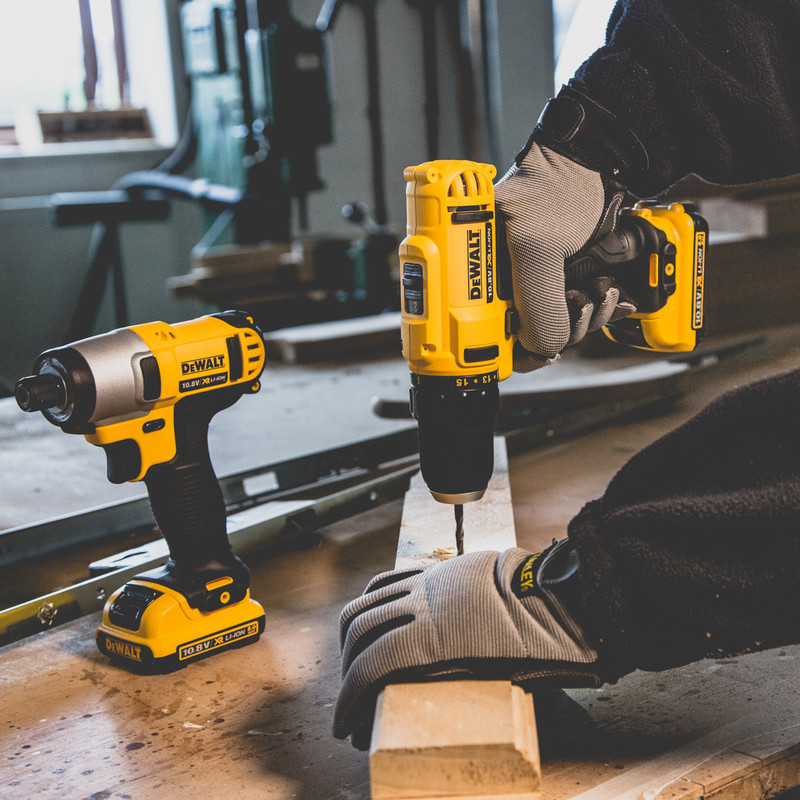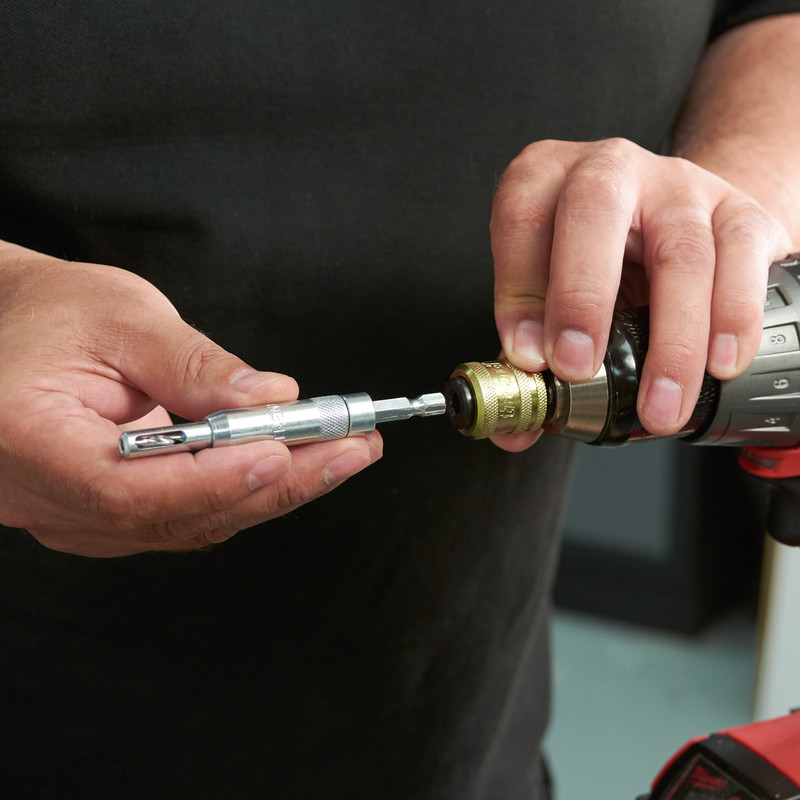Given that a combi drill and impact driver look very similar, you’d be forgiven for thinking that they’re the same thing, and they do have several similarities. Firstly, they’re both power tools that use rotational force, operating with a motor or battery to drive screws and drill holes, so you can tackle DIY tasks at home, or in the workplace.
That said, while they share some similarities, each tool is built for different purposes and understanding these differences can help you choose the right tool for the right job. In this guide, we’ll be diving into the key features, uses and functionality of both tools, helping you navigate the confusing maze of whether to buy a combi drill, an impact driver, or both!
Combi Drill VS Impact Driver - What's The Difference?
Firstly, it’s important to know that there are different types of drills - with a combi drill offering the most versatility. But, how does it compare to the impact driver? While both the combi drill and impact driver drive fasteners, like bolts and screws, and drill holes, the key difference lies in their driving mechanism and primary function.
The core function of an impact driver is to drive screws and bolts where a high amount of torque and power is required, making it ideal for things like driving long screws into hardwood. On the other hand, a combi drill is designed to undertake multiple functions, those being drilling holes, driving fixings and hammering into hard materials. It’s important to note that an impact driver can also drill holes but as it’s not specifically designed to do this, it’s probably best to use a combi drill. That said, in the case of very tough materials, like concrete or masonry, a hammer drill would be the better choice.
Both the combi drill and impact driver feature hammer actions, but they serve different purposes. The hammer action on a combi drill is designed for boring holes into harder surfaces, while the hammer action on an impact driver is intended for driving heavy-duty fasteners, like bolts, into things like steel frames.
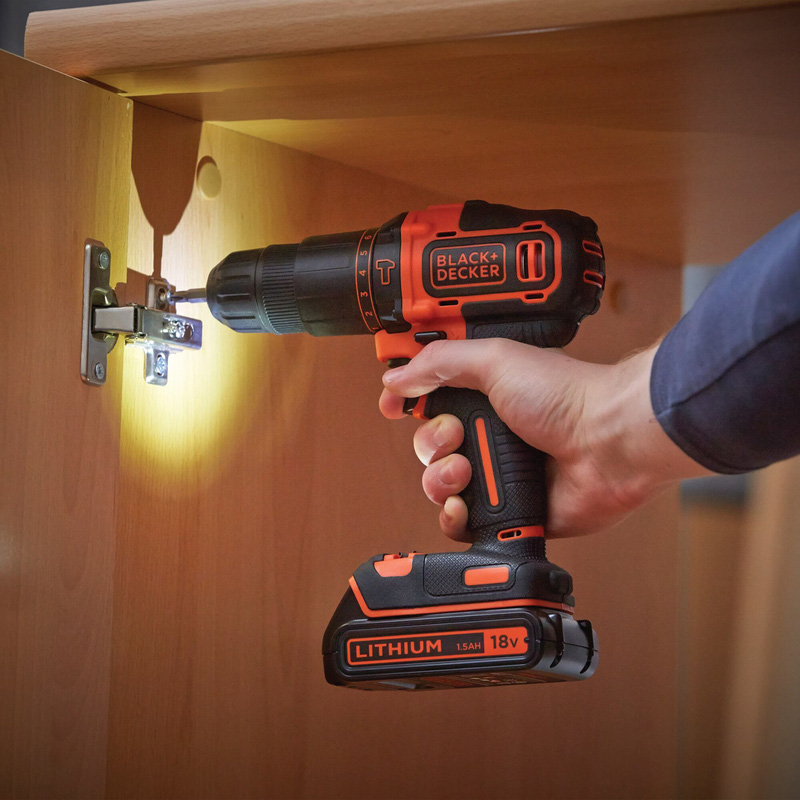
Power and Performance
When it comes to power, the driving mechanisms on both a combi drill and impact driver work to produce torque, but these function in different ways. The power on a combi drill travels straight through the motor and into the chuck (the part where you attach the drill bit or other accessory) and moves in a linear direction (forwards, in a straight line). Conversely, the impact driver features a hammer and anvil mechanism which taps the chuck in a rotational direction. Let’s now look at how they can impact performance.
Because the combi drill provides a smooth and consistent movement, this keeps power continuously running - making it ideal for drilling holes and driving screws when steady rotation is needed. In contrast, the impact driver delivers short bursts of high-powered torque making it significantly better for driving bolts and screws quickly into heavy-duty materials, such as steel box section or thicker pieces of wood.
But why doesn’t a combi drill do as good a job when driving screws and other fasteners into tougher materials? Simple, that’s because it lacks the power when compared to an impact driver due to the way it works.
For example, if using a combi drill to drive a long screw into something like decking, the drill applies a continuous rotational force which is the equivalent of applying consistent pressure on the screw simply by pressing downwards. That’s why some drills are used with an auxiliary handle so you can apply more force. If you were to perform the same task using an impact driver, its functionality means instead of applying pressure, it’s more like banging the screw in with a hammer, but at high speed with lots of power - that’s why you can hear a tapping noise when in use.
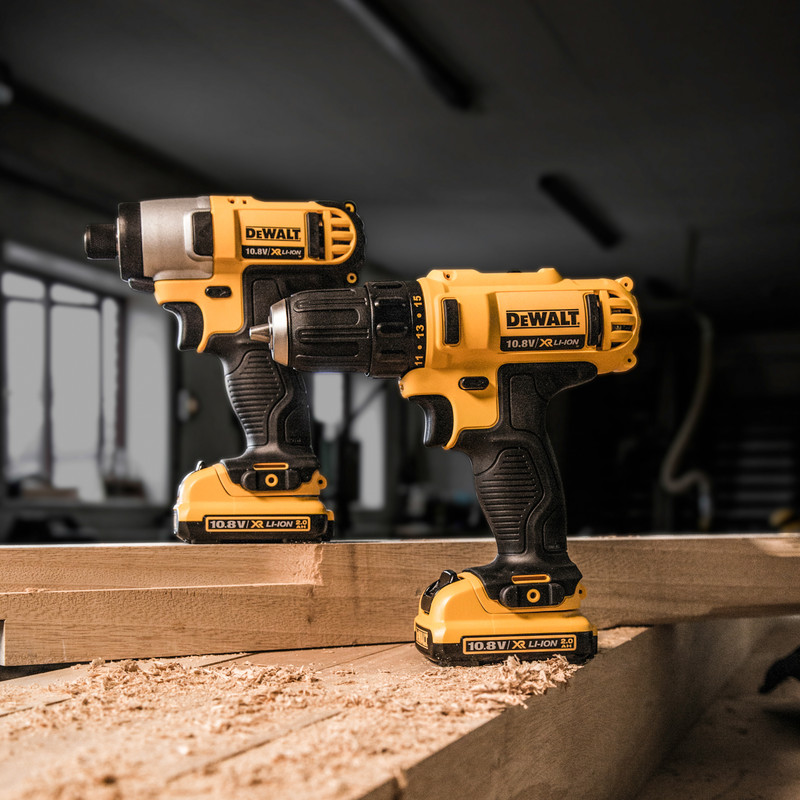
Combi Drill VS Impact Driver: Best Uses
Typically, the combi drill is considered a great all-rounder for many DIY jobs around the home. These could be things like hanging pictures or shelving, and assembling flat-pack furniture. In those instances an impact driver would likely prove too powerful, potentially resulting in stripped screws and damage to surfaces.
You’ll find that the combi drill also offers a greater degree of control and versatility, compared to an impact driver, and that’s thanks to the adjustable chuck and clutch. The clutch allows you to adjust the torque power, meaning you can set a specific torque limit which is most suited to the job being carried out. The adjustable chuck meanwhile, allows you to make use of a wide variety of drill bits and other accessories, so you can tackle a variety of different tasks. So, where does that leave the impact driver?
The impact driver will excel at jobs that require more power utilising fixings like longer screws and heavy-duty bolts, or where the material is thicker and denser. This makes it perfect for jobs such as laying decking boards, installing fence posts or tightening fasteners during some general car maintenance. While a combi drill can drive screws and bolts, it’s not as efficient and applying too much pressure could overheat the motor resulting in damage.
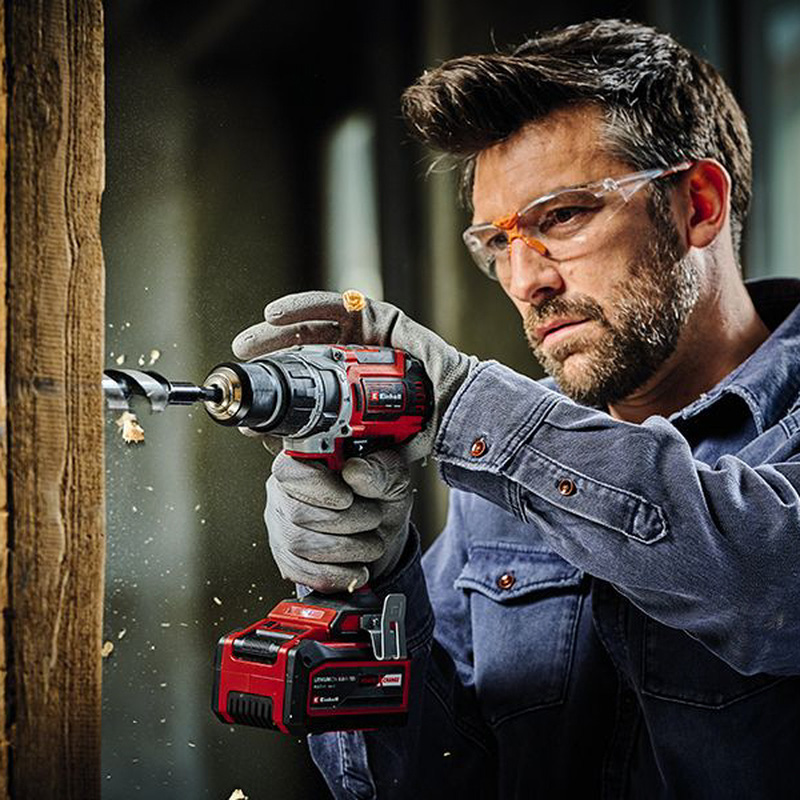
Key Features of A Combi Drill
Hammer Action
The hammer action mode allows the drill to deliver a rapid, pulsing motion, known as hammer blows, alongside its normal rotational action, making it ideal for drilling and boring holes into tougher materials.
Torque
A combi drill typically has a lower torque output compared to an impact driver, but it is more controlled and consistent with a torque adjustment setting so you can set the torque level for different tasks.
Speed Control
Combi drills come with a two-speed gear box for greater control when working. Low speed is ideal when more precision is needed, whereas a higher speed would be best when drilling into tough materials.
Chuck Type
The chuck is the part of the drill that holds the drill bit or accessory in place. Typically, this is a keyless chuck allowing for fast changeover between drill bits and driver bits. The chuck on a combi drill is designed to accommodate a wide variety of bit types giving it its versatility.
Clutch
A clutch isn't just something you'd find on a car! In the case of a combi drill the clutch provides control over the torque applied when driving screws. By adjusting the clutch, you can set a specific torque limit to prevent over-driving screws, which can damage the material or strip the screw.
Size & Weight
The heavier weight and larger size of a combi drill can make them more cumbersome to use so may not be ideal for long-duration DIY jobs. Because it’s a multi-purpose tool, it has a more complex motor and gearbox with additional components which contribute to its weight.
Forward / Reverse Function
The forward/reverse function allows you to easily switch the direction of the drill. Forward is used for drilling and driving screws in, while reverse is used for removing screws or backing out a drill bit.
Key Features of an Impact Driver
Hammer Action
The hammer action in an impact driver delivers high-torque bursts in short, rapid pulses, providing more force than a standard drill. This makes it ideal for driving screws and bolts into tough materials like hardwood, metal, or concrete without the tool stalling.
Torque
An impact driver delivers high torque levels by way of fast, high-frequency bursts of rotational force. This is much less steady compared to a combi drill but offers more power without applying too much force, making it perfect for driving fasteners with ease.
Speed Control
The speed control on an impact driver is a little more consistent and this is because the focus is more on delivery of high torque rather than different speed levels. So, while the speed is variable it can’t be as finely tuned as a combi drill.
Chuck Type
The chuck on an impact driver is usually a 1/4-inch hex collet, designed for quick and easy bit changes. Unlike a combi drill’s adjustable chuck, this type of chuck is not keyless but does have a quick-release mechanism. It securely holds impact driver bits and is optimised for driving screws and other fasteners.
Size & Weight
Impact drivers are typically more compact and lightweight than combi drills, making them easier to manoeuvre in tight or confined spaces. Their smaller size allows for greater control and precision when working in areas with limited space. The reduced weight can also help to reduce hand fatigue during extended use.
Forward / Reverse Function
The forward/reverse function on an impact driver is similar to that on a combi drill and is used to control the direction of the drill bit’s rotation. However, it’s less versatile and is only used to drive fasteners in or out. The reverse function is especially useful when you need extra power to undo fasteners that are tightly secured.
Combi Drill VS Impact Driver - Pros and Cons
Benefits of a Combi Drill
More Versatile
-
Compared to an impact driver, the combi drill is more versatile as it combines drilling, hammer drilling (for masonry harder materials), and driving screws into one tool.
More Options for Drill Bits
-
The adjustable chuck lets you use a wide range of drill bit sizes for different tasks. This makes the combi drill a great all-rounder for tackling many light duty DIY jobs around the home.
Features a Clutch
-
The clutch on a combi drill allows for precise torque settings, helping to prevent over-countersinking screws and bolts. Adjusting the power is useful depending on the type you’re carrying out.
Limitations of a Combi Drill
Larger and Heavier
-
A combi drill is typically bulkier and heavier compared to an impact driver, which can make it harder to use for extended periods or if needing to access tight spaces. The additional weight can also affect portability when working on site.
Hassle Changing Drill Bits
-
Switching between drill bits and screwdriver bits can be time-consuming, especially if you have to change bits often during a task.
Not Ideal for Hard Materials
-
While some combi drills have a hammer function, lower voltage models might struggle with tough materials like masonry or concrete, and could risk burning out the motor if overused.
Benefits of an Impact Driver
Small and Lightweight
-
The compact size and lighter weight of an impact driver makes it much easier to handle and manoeuvre. This can be helpful if you’re working on a time-consuming project or you need to access hard-to-reach places.
Good for Repetitive Tasks
-
An impact driver is excellent for tasks that require lots of screw driving, such as laying decking or roofing. Due to its high torque and efficiency, driving screws can be done quickly and smoothly.
Best for Driving Screws into Harder Materials
-
In comparison to a combi drill, the high power torque and hammer action make it ideal for driving screws into really tough materials like hardwood, metal, and thick composites.
Limitations of an Impact Driver
More Specialist
-
Impact drivers are generally used more by tradespeople in a commercial setting or for specific tasks, so they may not offer the same versatility as a combi drill, especially for casual DIYers.
Screwdriver Bits Are More Expensive
-
The heavy-duty bits required for impact drivers tend to be more costly due to their heavy-duty construction. It’s worth pointing out that you shouldn’t try to use standard drill bits with an impact driver as there is a risk of them shattering.
Lack of Precision
-
One significant drawback of an impact driver is its lack of precision compared to a combi drill. While impact drivers are great for driving screws quickly and with high torque, they can struggle with delicate or precise tasks.

